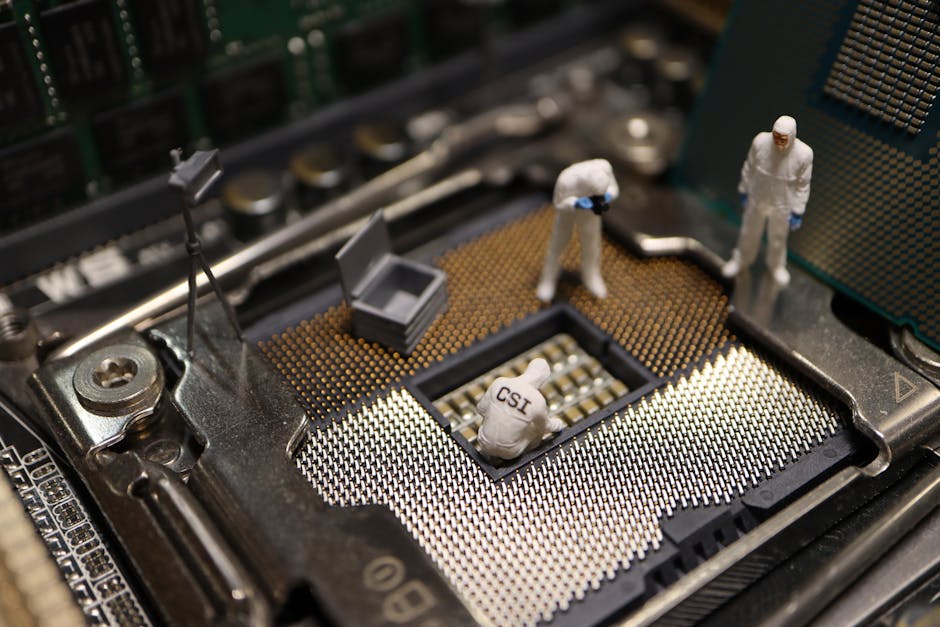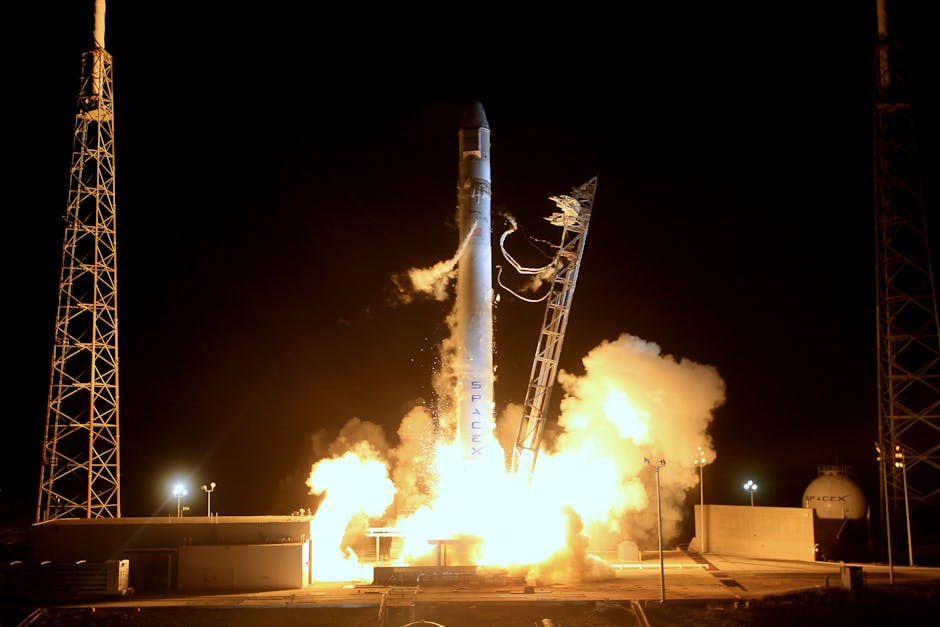The Advanced Gemini missions were a series of proposals to extend the original Gemini program. These missions included crewed low Earth orbit, circumlunar, and lunar landing missions. NASA’s Gemini program was the second crewed spaceflight program and featured a two-seat spacecraft capable of maneuvering in orbit and docking with uncrewed spacecraft. The Advanced Gemini missions aimed to leverage and expand these capabilities to achieve even more complex space endeavors. Applications ranged from military flights and space station logistics to lunar expeditions, showcasing the Gemini spacecraft’s versatility and potential.
Table of Contents
More from me
The Advanced Gemini program represented a series of ambitious proposals aimed at extending the capabilities of the original Gemini program. This extension envisioned a variety of missions, including crewed flights in low Earth orbit, circumlunar trajectories, and even lunar landings. The Gemini program, NASA’s second crewed spaceflight initiative, featured a two-seat spacecraft designed for orbital maneuvering, docking with uncrewed vehicles like Agena Target Vehicles, and enabling astronauts to conduct tethered extra-vehicular activities. The concept of Advanced Gemini missions was to leverage and expand upon these existing capabilities to achieve even more complex and groundbreaking space endeavors. These proposals sought to push the boundaries of space exploration and solidify America’s dominance in the space race, exploring options from military applications to deep-space missions.
Exploring the Potential of Advanced Gemini Missions
The scope of applications considered for Advanced Gemini missions was extensive, encompassing military flights, space station crew and logistics support, and lunar expeditions. Lunar proposals varied from repurposing the docking systems developed for the Agena target vehicle with more powerful upper stages, such as the Centaur, capable of propelling the spacecraft to the Moon, to comprehensive modifications of the Gemini spacecraft to enable lunar surface landings. These potential applications ranged from conducting crewed lunar flybys before the Apollo program was fully prepared to providing emergency shelters or rescue capabilities for stranded Apollo crews, and even potentially replacing the Apollo program altogether. The versatility of the Gemini spacecraft made it an attractive option for a wide array of missions, offering a cost-effective and adaptable platform for exploring the cosmos. The proposals showcased the ingenuity of engineers and scientists in envisioning new ways to utilize existing technology for ambitious goals.
Some Advanced Gemini missions proposals utilized “off-the-shelf” Gemini spacecraft, remaining unmodified from the original program, while others incorporated modifications to accommodate larger crews, facilitate docking with space stations, enable lunar visits, and achieve other mission objectives. Additional modifications under consideration included the addition of wings or a parasail to the spacecraft, allowing for horizontal landings. These modifications aimed to enhance the spacecraft’s capabilities and adaptability to various mission requirements. The proposals highlighted the potential for incremental improvements to existing technology to achieve significant advancements in space exploration. By leveraging the existing Gemini platform, these proposals sought to minimize development costs and accelerate the timeline for achieving ambitious mission goals. The flexibility of the Gemini design allowed for a wide range of modifications, making it a versatile platform for exploring different mission scenarios.
The Gemini program served as the second American crewed orbital spaceflight program, succeeding Mercury and paving the way for Apollo. Its primary objective was to demonstrate the technologies and techniques essential for the Apollo program, including extra-vehicular activities, rendezvous and docking procedures, orbital maneuvering, and long-duration flight capabilities. These demonstrations were crucial for validating the feasibility of the Apollo program’s ambitious goals and ensuring the safety and success of future lunar missions. The Gemini program played a vital role in developing the skills and knowledge necessary for human spaceflight, laying the foundation for subsequent achievements in space exploration. The Advanced Gemini missions sought to build upon this foundation, pushing the boundaries of what was possible with crewed spacecraft and expanding the scope of human presence in space.
The Gemini spacecraft, constructed by McDonnell Aircraft, was derived from the earlier Mercury spacecraft but was modified to accommodate two astronauts. It was also equipped with an expanded equipment module, enabling it to support longer missions and perform orbital maneuvers. The spacecraft was launched using the Titan II rocket from Launch Complex 19 at Cape Canaveral Air Force Station. A total of twelve missions were launched, with ten being crewed. Following two uncrewed test flights, the first crewed flight, Gemini 3, was launched on March 23, 1965. The program concluded on November 15, 1966, with the successful recovery of Gemini 12. The Advanced Gemini missions sought to leverage the proven reliability and capabilities of the Gemini spacecraft to achieve even more ambitious goals, building upon the successes of the original program and pushing the boundaries of human spaceflight.
The Versatile Applications of Advanced Gemini
Many other applications were envisioned for the Gemini spacecraft at various stages before, during, and after its two-year operational period with NASA for crewed spaceflight. Although none of these proposals were ever implemented, many were seriously considered, and in some instances, flight hardware was constructed before cancellation. For example, in the case of the Manned Orbital Laboratory (MOL), a Gemini spacecraft was launched on a suborbital demonstration flight in support of the program. In some cases, technology developed within the Advanced Gemini missions program was reintegrated into other programs, such as components from the Titan IIIM, which was intended to launch MOL, being used to upgrade other Titan rockets. These alternative applications highlight the versatility of the Gemini spacecraft and the potential for its use in a variety of space-related activities.
The United States Air Force (USAF) intended to utilize the Gemini spacecraft to transport astronauts to its proposed space stations, the Manned Orbital Development System and later the Manned Orbital Laboratory (MOL). These stations were to be launched using Titan IIIM rockets, with a Gemini spacecraft atop, eliminating the need for rendezvous and docking maneuvers. To facilitate this, several modifications were made to the Gemini capsule, including the installation of a hatch in the heat shield to allow access to the space station. This modification would have streamlined the process of transferring crew and equipment between the Gemini spacecraft and the space station, enhancing the efficiency of operations in orbit. The Advanced Gemini missions concept played a crucial role in shaping the USAF’s plans for space-based activities and its efforts to establish a permanent human presence in space.
To provide its astronauts with experience before these programs commenced, the Blue Gemini program was proposed. This program would have involved USAF astronauts flying on NASA missions to practice various techniques required for their own missions. This would have begun with cooperative missions between NASA and the USAF, with two missions flying with mixed crews, followed by two missions with all-USAF crews but performing missions for NASA. Following these flights, the USAF would have flown a two-man Agena rendezvous and docking mission, followed by two one-man scientific or technology research missions. Other proposed missions included tests of the Astronaut Mobility Unit designed to assist with EVAs, inertial navigation systems, and flying a radar imaging system. The Blue Gemini program was envisioned as a valuable training ground for USAF astronauts, preparing them for the challenges of operating in space and conducting complex missions. The Advanced Gemini missions concept served as a catalyst for fostering collaboration between NASA and the USAF in the pursuit of space exploration and technological advancement.
MOL launches were planned to be conducted from Launch Complex 40 at Cape Canaveral Air Force Station and Space Launch Complex 6 at Vandenberg Air Force Base. In 1966, a test flight was launched from LC-40 using a Titan IIIC. It consisted of the Gemini B spacecraft, built from the spacecraft used for the Gemini 2 test flight, atop OPS 0855, a boilerplate MOL space station. Gemini B was released on a suborbital trajectory and descended to Earth to test modifications made to the heat shield and ensure that the access hatch would not affect its performance. OPS 0855 continued into orbit. Early MOL stations would have been staffed by a single crew, launched with the station. Later stations were designed to be resupplied and support multiple crews, delivered by additional Gemini spacecraft or derivatives. The MOL program represented a significant investment in space-based infrastructure and a commitment to establishing a long-term human presence in orbit. The Advanced Gemini missions concept played a pivotal role in shaping the MOL program’s objectives and operational plans.
The MOL program was ultimately canceled on June 10, 1969, in favor of uncrewed reconnaissance satellites. However, some systems developed for the program were later used on uncrewed missions, and the spacesuits under development were transferred to NASA. The Titan IIIM rocket intended to launch MOL never flew, but some of the upgrades built into it were later used to upgrade other Titan rockets. The stretched first and second stages became the Titan 34, used as the core of some later Titan IIIB flights and on the Titan 34D. The seven-segment solid rocket boosters were later introduced on the Titan IV-A. Despite its cancellation, the MOL program left a lasting legacy in the form of technological advancements and hardware components that were repurposed for other space-related endeavors. The Advanced Gemini missions concept, although not fully realized, contributed to the overall progress of space exploration and the development of new technologies.
Gemini Ferry Spacecraft: Transporting Crews and Cargo
Several Gemini Ferry spacecraft were proposed to provide transportation of crews and cargo to NASA and USAF space stations in low Earth orbit. NASA contracted McDonnell to conduct a study into the modifications needed to allow the Gemini spacecraft to support this. Three spacecraft were envisioned: one to transport crew to the stations, one with a cargo module for both crew and cargo delivery, and a dedicated uncrewed spacecraft to resupply the station every three or four months. These proposals aimed to enhance the efficiency and cost-effectiveness of space station operations by providing a reliable and versatile transportation system. The Advanced Gemini missions concept played a crucial role in shaping the design and capabilities of these proposed ferry spacecraft, ensuring that they could meet the diverse needs of space station operations.
The studies focused on minimizing required modifications to the Gemini spacecraft. Three docking methods were considered. The first was using the existing docking system from Gemini-Agena missions. This would have allowed the mission to be accomplished with minimal modification to the Gemini spacecraft; however, crew transfer could only have been accomplished via an extra-vehicular activity (EVA). Changes required included strengthening the nose, installing two solid rockets for a separation burn, adding equipment to perform the transfer EVA, and providing provisions for flight to and from the station. The number of retro-rockets would have been increased from four to six. A second method involved docking in the same way, but after docking, the spacecraft would be swung around and attached to the side of the space station. A tunnel would then have been placed over the Gemini’s hatches, allowing the crew to transfer to the station without performing an EVA. Some modifications to the hatches would have been required. The final proposed docking method was to use a port mounted on the rear of the equipment module, allowing the crew to transfer directly between the spacecraft and space station through the docking port. These docking methods aimed to provide a safe and efficient means of transferring crew and cargo between the Gemini spacecraft and space stations, enhancing the overall effectiveness of space station operations. The Advanced Gemini missions concept played a key role in evaluating and selecting the most suitable docking methods for these proposed ferry spacecraft.
A modified version of the spacecraft was proposed, including a cargo module attached to the back of a modified equipment module. The spacecraft would have approached the station and docked backward using a port on the rear of the cargo module. If one of the forward docking configurations had been used for the Gemini itself, the docking would have been controlled remotely from the station, with the Gemini then separating from the cargo module and flying around the station to dock normally on a different port. The rear-docking Gemini would have simply remained attached to the cargo module, with the crew boarding the station through it. Its docking would have been controlled by its own crew, from a station at the back of the cargo module. This modified spacecraft design aimed to provide a more streamlined and efficient means of transferring cargo to space stations, reducing the need for complex maneuvers and minimizing the risk of damage to the spacecraft or station. The Advanced Gemini missions concept played a crucial role in shaping the design and capabilities of this proposed cargo-carrying spacecraft.
Two Gemini-derived spacecraft were considered for uncrewed resupply flights. The first involved a Gemini spacecraft with all systems for crewed flight, re-entry, and landing removed. The spacecraft would have docked using a port at the front. Cargo would have been transferred through the nose, where the re-entry attitude control system was located on the crewed spacecraft. The spacecraft was equipped with a liquid propellant engine to perform rendezvous and reboost the space station. The other proposal was for a new spacecraft to be built for uncrewed missions, reusing as many Gemini systems as possible. It would have had a higher cargo capacity than the stripped-down version of the Gemini spacecraft. These uncrewed resupply spacecraft aimed to provide a cost-effective and reliable means of delivering essential supplies and equipment to space stations, ensuring their continued operation and supporting the activities of their crews. The Advanced Gemini missions concept played a key role in shaping the design and capabilities of these proposed resupply spacecraft.
Crew-only or cargo-only supply missions would have been launched aboard a Titan II, and the Saturn I or Saturn IB would have been used for the combined crew and cargo spacecraft. Because of the increased power of the Saturn I, the Gemini spacecraft’s ejection seats would not have been able to propel the crew far enough in the event of an explosion, so a launch escape tower was proposed, based on the one used on the Mercury spacecraft. The Titan IIIM was also considered to launch the heavier spacecraft. These launch configurations aimed to provide a safe and reliable means of delivering crew and cargo to space stations, taking into account the different payload capacities and safety requirements of each mission. The Advanced Gemini missions concept played a crucial role in evaluating and selecting the most suitable launch vehicles for these proposed ferry spacecraft.
Big Gemini: Expanding Crew Capacity
Big Gemini, or Big G, evolved from a 1963 proposal called Gemini Transport, which aimed to develop an enlarged Gemini spacecraft with docking capability, leveraging the increased capacity offered by the Saturn IB and Titan IIIM rockets. It was designed to transport between nine and twelve astronauts into space and to dock with space stations, supporting Apollo Applications and MOL missions. It would have been launched by a heavy-lift launch vehicle, either a Titan IIIG or Saturn INT-20, with the former intended for USAF missions and the latter for NASA missions. The Titan IIIM was also considered, which would have launched a smaller version of the spacecraft due to its lower capacity, to resupply MOL space stations later in the program. NASA also proposed several Saturn IB derivatives with solid first stages as alternatives to the INT-20, offering similar payload capacity. The Big Gemini concept represented a significant step towards increasing the capacity and capabilities of crewed spacecraft, enabling larger crews to be transported to and from space stations. The Advanced Gemini missions concept played a crucial role in shaping the design and objectives of this ambitious project.
The shape and mass of the spacecraft would have varied depending on the rocket used to launch it. The Saturn-launched version had a short, conical cargo module and a total mass of 47,300 kilograms (104,300 lb), whereas the Titan IIIG-launched version featured a longer, cylindrical module, with a total mass of 59,000 kilograms (130,000 lb). The Titan IIIM version would have been much shorter and lighter, with a mass of 15,600 kilograms (34,400 lb), as that rocket had less payload capacity than the Titan IIIG or Saturn. The IIIG variant would have carried twelve crew, while the others had a maximum capacity of nine. Use of the NASA variant with the Apollo Service Module was also considered. These variations in design and configuration reflected the need to adapt the Big Gemini spacecraft to the specific capabilities of different launch vehicles, ensuring that it could be launched safely and efficiently. The Advanced Gemini missions concept played a key role in evaluating and selecting the most suitable launch configurations for this ambitious project.
Once in orbit, Big G would have docked with space stations using an Apollo docking probe mounted on the rear of the cargo module, which was in turn mounted on the rear of the re-entry module. The re-entry module itself would have been enlarged to accommodate the larger crew, and the modifications made to the spacecraft for the MOL program would have been incorporated, including the hatch in the heat shield, which would have been used to provide access to the cargo module. In the event of a launch failure, the launch escape system developed for the Apollo spacecraft would have been used to propel the re-entry module clear of the rocket. These safety features and docking mechanisms aimed to ensure the safety and reliability of the Big Gemini spacecraft, protecting the crew in the event of an emergency and enabling them to dock safely with space stations. The Advanced Gemini missions concept played a crucial role in shaping the design and implementation of these critical systems.
Big G would have made landings on land, using a parasail or paraglider to guide it onto a runway or dry lake, such as the one at Edwards Air Force Base. It would have landed using skids derived from the North American X-15. This innovative landing system aimed to provide a more precise and controlled means of returning the Big Gemini spacecraft to Earth, reducing the risks associated with traditional splashdown landings. The use of a parasail or paraglider would have allowed the spacecraft to be steered towards a designated landing site, while the skids would have provided a stable platform for touchdown. The Advanced Gemini missions concept played a key role in evaluating and selecting this advanced landing system.
Studies investigated sending a Gemini spacecraft onto a circumlunar trajectory. Many proposals involved a double-launch architecture, with the Gemini spacecraft rendezvousing with an upper stage in orbit. Upper stages considered included the Transtage, the second stage of a Titan II, four types of Centaur (including the S-V variant developed for the Saturn I), the Agena-D, an enlarged Agena, and two Agenas burning in parallel. Either a Titan or Saturn IB would have launched the upper stage, while the Gemini would launch on the Titan II, as in the Gemini program. These proposals aimed to extend the reach of the Gemini spacecraft beyond Earth orbit, enabling it to conduct missions to the Moon. The Advanced Gemini missions concept played a crucial role in exploring and evaluating the feasibility of these ambitious circumlunar missions.
Lunar Missions and Rescue Operations
Other proposals involved launching the Gemini spacecraft on a Titan IIIC and refueling in low Earth orbit before proceeding to the Moon, and a single-launch architecture using a three-stage variant of the Saturn IB. These alternative launch configurations aimed to provide a more efficient and cost-effective means of sending the Gemini spacecraft to the Moon, reducing the need for complex rendezvous and docking maneuvers. The Advanced Gemini missions concept played a key role in evaluating and selecting the most suitable launch strategies for these proposed lunar missions.
The Gemini-Centaur proposal was predicted to achieve a 72-hour circumlunar flight. The Centaur would have performed trans-lunar injection before separating from the Gemini spacecraft. This mission profile aimed to provide a relatively quick and efficient means of conducting a circumlunar flight, allowing astronauts to observe the Moon and gather valuable scientific data. The Advanced Gemini missions concept played a crucial role in shaping the design and objectives of this proposed circumlunar mission.
Concerns were raised that the Gemini spacecraft’s heat shield would not protect it during the higher-speed ballistic reentry associated with the required trajectory. NASA proposed using a thicker heat shield and more insulation. These modifications made the spacecraft too heavy to be launched by the Titan II rocket used for the original twelve Gemini missions, so solid rocket motors would have been added to allow this additional mass to be flown. These safety enhancements aimed to ensure the survival of the crew during the high-speed reentry from a circumlunar trajectory, mitigating the risks associated with the increased velocity. The Advanced Gemini missions concept played a crucial role in identifying and addressing these potential safety concerns.
The Gemini spacecraft would have rendezvoused with stacked Centaur and Agena upper stages in low Earth orbit. The Centaur would have placed the Gemini and Agena onto a circumlunar trajectory, along which they would coast until reaching the Moon. The Agena would then have been used to perform Lunar orbit insertion. Following the completion of activities in Lunar orbit, the Agena would have been fired again for trans-Earth injection. This mission profile aimed to provide a more versatile and capable means of conducting lunar missions, allowing astronauts to perform a wider range of activities in lunar orbit. The Advanced Gemini missions concept played a crucial role in shaping the design and objectives of this proposed lunar mission.
This architecture would have used a Titan II to launch the Gemini spacecraft, with a Saturn IB launching the upper stages. Using the Gemini spacecraft for a crewed Lunar landing was considered as early as the original Mercury Mark II proposal which led to the Gemini program. The initial proposal was for a Lunar orbit rendezvous mission, using a Gemini spacecraft and a lightweight, open-cockpit lander, launched by a Saturn C-3 rocket. It was the first time that Lunar orbit rendezvous was proposed as part of a lunar landing concept. The Advanced Gemini missions concept played a crucial role in shaping the early proposals for lunar landing missions, exploring different mission architectures and spacecraft designs.
Rescue Spacecraft and Safety Reviews
Another proposal would have used a Saturn V to achieve a direct ascent mission profile. The spacecraft consisted of four modules. The Retrograde Module would have been powered by an RL10 engine and used to propel the spacecraft during the trans-lunar coast. During landing, it would be used for the initial phases of powered descent. At an altitude of 1,800 meters (5,900 ft) above the Lunar surface, the RM would have been jettisoned, and a second module, the Terminal Landing Module, would have performed the final descent. After landing, the spacecraft would have stayed on the Moon for a day before it was propelled back to Earth. Launch from the Lunar Surface and trans-Earth injection would have been performed by the Service Module, which would also have contained components of the life support system and other systems located in the Equipment Module of the Earth orbit Gemini spacecraft. The Reentry Module was based on the Gemini capsule but would have been modified to allow it to reenter the atmosphere at the higher velocity required by a lunar flight. It was seen as the last effort by NASA managers and engineers who still advocated the direct ascent mission profile and was intended to be cheaper, faster, and safer than the Apollo lunar orbit rendezvous technique. The Advanced Gemini missions concept played a crucial role in shaping the debate over different lunar landing strategies, with proponents of direct ascent arguing for its simplicity and cost-effectiveness.
Due to the risks associated with the Lunar landing, several rescue spacecraft were proposed to allow the crew of an Apollo mission to return to Earth safely in the event of a problem. Many of these designs were based around the Gemini spacecraft. These rescue spacecraft aimed to provide a safety net for Apollo missions, ensuring that astronauts could be rescued in the event of a critical failure. The Advanced Gemini missions concept played a crucial role in shaping the design and capabilities of these proposed rescue spacecraft.
One of these proposals was the Gemini Lunar Orbit Rescue Vehicle, designed to retrieve the crew of an Apollo spacecraft stranded in orbit around the Moon. It was to have used a stretched reentry module to accommodate the three astronauts aboard the Apollo. This would have been attached to a modified Equipment Module. The Equipment Module contained engines for Lunar orbit insertion and trans-Earth injection, as well as life support equipment to keep the crew alive until they returned to Earth. Launch and trans-Lunar injection would have been performed by a Saturn V. Once in Lunar orbit, the Apollo crew would have boarded it via an EVA. This rescue spacecraft aimed to provide a means of retrieving astronauts stranded in lunar orbit, ensuring their safe return to Earth. The Advanced Gemini missions concept played a crucial role in shaping the design and operational profile of this proposed rescue vehicle.
Another proposed spacecraft, the Gemini Lunar Surface Survival Shelter, was designed to be sent to the Moon ahead of an Apollo mission. It would have landed close to the planned Apollo landing site, and if the Apollo Lunar Module’s ascent stage failed to ignite, the crew would have performed an EVA to transfer to the LSSS. The shelter was not designed to take off again after landing, so an LSRS or another Apollo mission would then be sent to collect the crew, while the Command Module Pilot of the original Apollo mission would have returned to Earth alone aboard his spacecraft. It consisted of a Gemini Reentry Module, which would have housed the astronauts while they awaited rescue, and a descent stage containing life support systems, consumables, and the engine and propellant used to land the spacecraft. This survival shelter aimed to provide a safe haven for astronauts stranded on the lunar surface, ensuring their survival until a rescue mission could be launched. The Advanced Gemini missions concept played a crucial role in shaping the design and capabilities of this proposed shelter.
The Gemini Lunar Surface Rescue Spacecraft was intended to fly a direct ascent mission, launched by a Saturn V. Descent stages, built from either the descent stage of the Apollo Lunar Module or from the Apollo Service Module, would have reduced the spacecraft’s velocity as it approached the Moon. One configuration used two Service Modules and one LEM descent stage, with the LEM descent stage performing the final landing and then being reused for ascent from the Lunar surface and trans-Earth injection. The other configuration used three LEM descent stages, with the second being used for landing and the third for ascent and TEI. The LSRS would have landed close to the Apollo Lunar Module on the Moon, and the Apollo crew would have transferred to it by EVA. This rescue spacecraft aimed to provide a means of retrieving astronauts stranded on the lunar surface, ensuring their safe return to Earth. The Advanced Gemini missions concept played a crucial role in shaping the design and operational profile of this proposed rescue vehicle.
Advanced Concepts and Final Proposals
Following the Apollo 1 fire in January 1967, NASA conducted a safety review of the Apollo program. In response, McDonnell proposed the Universal Lunar Rescue Vehicle, a repackaged version of the Lunar Surface Rescue Spacecraft with an enlarged capsule to make room for the three astronauts being rescued. It was intended to rescue an Apollo crew at almost any point while they were at the Moon, should an anomaly occur. Some ULRV designs included five seats, with two astronauts piloting it to the Moon. The proposal was considered but rejected due to a lack of funds. This rescue spacecraft aimed to provide a comprehensive means of rescuing astronauts stranded at any point during a lunar mission, addressing the safety concerns raised by the Apollo 1 fire. The Advanced Gemini missions concept played a crucial role in shaping the design and capabilities of this proposed rescue vehicle.
The Manned Orbital Telescope was a proposal for a crewed spacecraft for astronomical or solar observation. It would have used the larger reentry module also proposed for the Big Gemini spacecraft and would have been launched on a Saturn IB. The enlarged reentry module was also considered for a spacecraft proposed at the same time, which would have been used to rescue the crews of spacecraft stranded in low Earth orbit. It would have launched atop a Titan IIIC; once in orbit, it would have maneuvered by means of a Transtage integrated into the equipment module. The larger capsule would have been used to accommodate the crew of the spacecraft that required rescue. This proposal aimed to expand the scientific capabilities of crewed spacecraft, enabling astronauts to conduct astronomical and solar observations from orbit. The Advanced Gemini missions concept played a crucial role in shaping the design and objectives of this proposed orbital telescope.
Another proposed mission would have seen a Gemini spacecraft rendezvous with a Pegasus satellite in low Earth orbit. The spacecraft would have either been launched directly into an orbit to rendezvous with the Pegasus or into a lower orbit, subsequently docking with an Agena and using that to raise its orbit. The Gemini would have flown around the Pegasus, and then one of the crew would have performed an EVA to recover a piece of one of the spacecraft’s micrometeoroid detection panels. This mission would have been used to prove that rendezvous could be accomplished with any spacecraft, to collect data on the satellite’s exposure to micrometeoroids (supporting data that the satellite had returned itself), and to demonstrate technology for military flights to inspect hostile satellites. This proposal aimed to demonstrate the versatility of the Gemini spacecraft and its ability to perform a variety of missions, including rendezvous, data collection, and technology demonstration. The Advanced Gemini missions concept played a crucial role in shaping the design and objectives of this proposed mission.
Several missions were proposed to demonstrate methods of landing the Gemini spacecraft on land. The spacecraft had originally been designed to land using a flexible Rogallo wing and a set of skis or wheels; however, this was abandoned in favor of splashdowns under parachutes due to delays in development and failures during testing. As the proposed Big Gemini spacecraft would have landed this way, McDonnell Aircraft asked NASA to consider flying standard Gemini spacecraft with the paraglider to test the system before it would be required operationally. This proposal aimed to revive the original landing concept for the Gemini spacecraft, providing a more precise and controlled means of returning the spacecraft to Earth. The Advanced Gemini missions concept played a crucial role in shaping the debate over different landing strategies for crewed spacecraft.
Another alternative landing concept was the US Air Force’s proposal to attach wings to the spacecraft. This proposal arose soon after the cancellation of the X-20 Dyna-Soar and would have seen a Gemini spacecraft attached to a set of wings developed during the ASSET program. This would have been launched by a Titan II rocket and would have been unable to maneuver in orbit. Another proposal saw the spacecraft being launched by a Titan IIIA or IIIC, using the Transtage for maneuvering. Once the mission was complete, the spacecraft would have been deorbited by means of five solid rocket motors. There were also proposals to use the Gemini spacecraft to conduct long-duration missions to small, purpose-built space stations in low-Earth orbit. One proposal saw a space station based on the Agena, which would have been used to provide propulsion and attitude control for the station. A pressurized module between the Agena and the docking adapter would have been used by the crew for accommodation and to conduct experiments. The crew would have boarded the Agena via an inflatable tunnel between the hatches and its airlock. The Pecan spacecraft was a similar proposal. These proposals aimed to explore different applications for the Gemini spacecraft, including long-duration missions and alternative landing concepts. The Advanced Gemini missions concept played a crucial role in shaping the design and objectives of these proposed missions.
| Mission Type | Description | Key Features |
|---|---|---|
| Low Earth Orbit (LEO) | Crewed flights for various purposes. | Utilized existing Gemini spacecraft with minimal modifications. |
| Lunar Flyby | Crewed missions to orbit the Moon. | Required more powerful upper stages like Centaur. |
| Lunar Landing | Crewed missions to land on the Moon. | Extensive modifications to Gemini, including landing gear. |
| Space Station Support | Crew and cargo transport to space stations. | Modified Gemini spacecraft with docking ports and cargo modules. |
| Rescue Missions | Rescue of stranded Apollo crews. | Modified Gemini with increased capacity and life support systems. |
We also Published
RESOURCES
- Advanced Gemini – Wikipedia
- Gemini – Google DeepMind
- Gemini Apps’ release updates & improvements
- The Fascinating Concepts of Advanced Gemini
- Google Workspace with Gemini – Business / Enterprise – Google …
- Gemini Program | Finger Lakes Community College
- Google introduces Gemini 2.0: A new AI model for the agentic era
- Honest Review of Gemini Advanced : r/Bard
- Mercury, Gemini, Apollo Advanced Missions
- Project Gemini: Apollo’s Training Ground – NASA







0 Comments